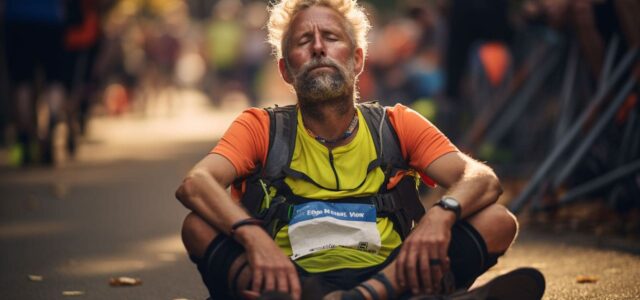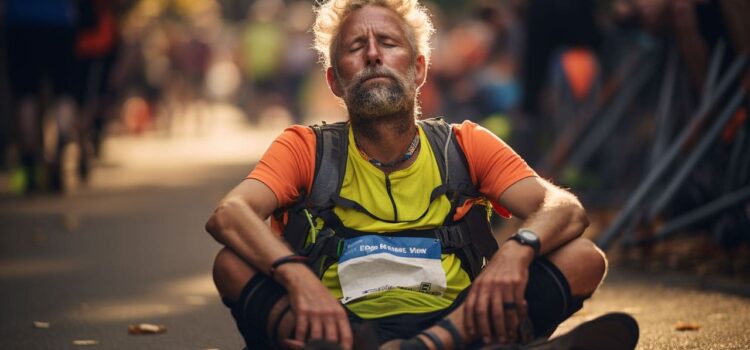

5 Essential Half Marathon Recovery Methods Every Runner Should Know
Injury Prevention and Recovery August 9, 2023 admin 0

If there’s one thing I’ve learned in all my years as a running coach, it’s that the race doesn’t end when you cross the finish line. Half marathon recovery is an often neglected yet absolutely crucial part of the running journey. Proper recovery allows your body to heal, prevents injuries, and sets the foundation for your future training. Today, let’s explore five essential half marathon recovery methods every runner should have in their toolkit.
1. Post-Race Cooldown
Whether you’ve just set a new personal record or completed your first half marathon, a proper cooldown is your first step in the recovery process. The goal here is to allow your body to gradually transition from the intense effort of racing back to its normal, restful state.
Start with a gentle walk for about 10 to 15 minutes to gradually lower your heart rate and minimize lactic acid build-up in your muscles. Walking aids in circulating blood through your body, preventing it from pooling in your lower extremities and reducing post-race dizziness or fainting.
Follow this up with some light static stretches, focusing on key muscle groups like your hamstrings, quadriceps, and calves. The purpose of these stretches is to improve flexibility, relieve any muscle tension, and aid in the recovery process. Hold each stretch for about 30 seconds to allow your muscles to relax and lengthen. Remember to breathe deeply and steadily as you stretch.
2. Hydration and Nutrition
After any intense exertion, replenishing your body’s energy stores is crucial. Dehydration can hinder your recovery and intensify muscle aches, making hydration a key aspect of your post-race recovery.
Hydration starts immediately after the race, prioritizing water and electrolyte-rich drinks. While water helps restore your body’s hydration levels, electrolyte drinks can help replace the salts lost through sweat during the race.
In the hours following the race, focus on balanced meals with a mix of carbohydrates to restore glycogen levels, proteins for muscle repair, and healthy fats. Carbohydrates are your body’s main energy source and will help replenish the glycogen stores depleted during the race. Proteins, on the other hand, aid in muscle recovery and repair. Fats should not be overlooked, as they provide long-lasting energy and aid in the absorption of certain nutrients.
3. Rest and Sleep
Nothing beats a good night’s sleep when it comes to recovery. During sleep, your body goes into overdrive to repair muscle tissues and replenish energy stores.
In the days following the half marathon, prioritize quality sleep. Aim for 7 to 9 hours of sleep each night and try to maintain a regular sleep schedule.
This is when your body releases growth hormones essential for muscle repair and recovery. Furthermore, a good sleep cycle can boost your immune system, reduce inflammation, and improve cognitive functions like memory and learning. So, go ahead and embrace those z’s – they’re a vital part of your recovery!
4. Active Recovery
Active recovery is a gentle exercise that can be described as a yin to your race’s yang. While it involves physical activity, the aim here isn’t to challenge yourself but to help your body recover. Active recovery keeps the blood flowing without adding additional stress to your muscles, which is crucial for a faster recovery.
A day or two after the race, consider engaging in low-impact, low-intensity exercises such as a leisurely walk, a leisurely bike ride, or a gentle swim. These activities are not about burning calories or building strength but rather about promoting blood flow to the muscles, which speeds up the healing process by delivering oxygen and nutrients to your muscles and removing waste products.
The key to effective active recovery is to listen to your body. If you feel pain or excessive fatigue, take it easy. Remember, the goal here is to aid recovery, not to add stress to your body.
5. Massage and Foam Rolling
A massage or foam rolling session after a half marathon can feel heavenly. But this isn’t just about pampering yourself (though that’s a great perk!). These techniques help to alleviate muscle tension, enhance flexibility, and aid recovery after your race.
A professional sports massage can provide a deep tissue treatment that’s perfect for post-race recovery. The masseuse can work out knots and tight spots, promoting blood flow to the area, relieving tension, and speeding up recovery.
But you don’t always need a professional. Self-massage using a foam roller or massage ball can also be highly effective. Known as self-myofascial release, this practice can help release muscle tightness, soothe sore muscles, and improve your muscle’s elasticity.
Foam rolling focuses on applying pressure to specific points on your body, similar to a deep tissue massage. When using a foam roller, gently roll back and forth over tight or sore muscle groups for about 30 seconds to help break down knots and improve flexibility.
Whether you opt for a professional massage or a DIY foam rolling session, remember that these techniques should not cause extreme pain. While some discomfort is expected, especially when working on tight or sore muscles, you should always listen to your body and not push it to the point of severe pain.
Congratulations on completing your half marathon! By implementing these recovery strategies, you’ll be back to running comfortably and planning your next race in no time.
No comments so far.
Be first to leave comment below.